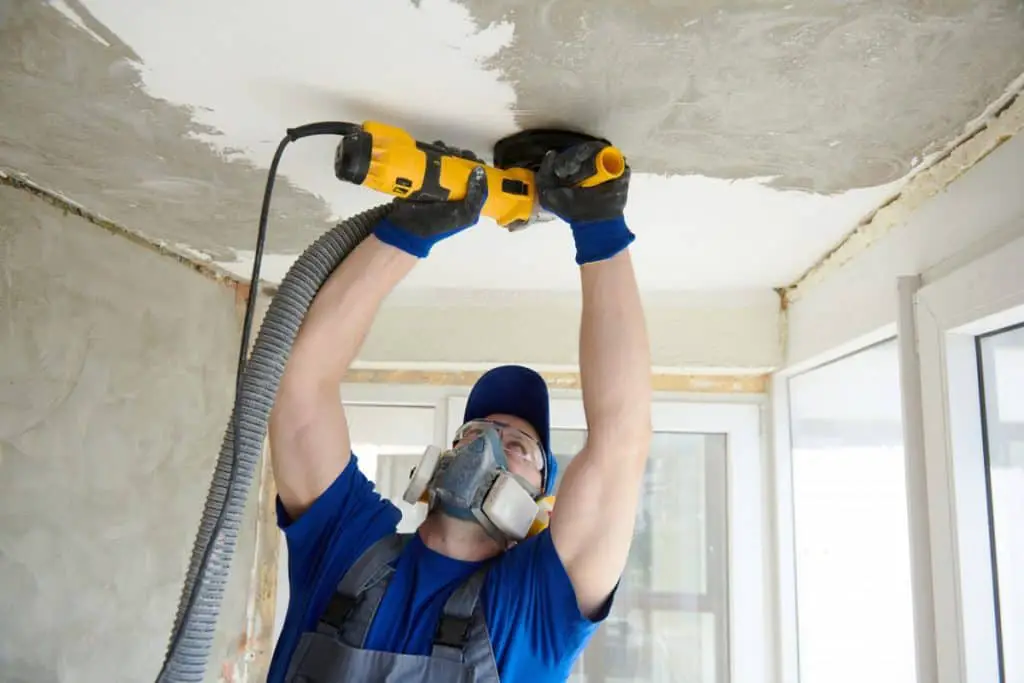Bland grey floors are no pretty picture, and while it may seem like slapping a coat of paint on would be fine, that is not the case. Before painting or decorating your concrete, take into account the importance and purpose of primer.
Primer is necessary before painting concrete because it gives the paint a sticky surface to adhere to. This allows your paint to last longer and become chip-resistant. Primer also prolongs the life of your concrete by soaking in and changing a rough surface to a smooth one.
Let’s look into why concrete should have a coat of primer before painting. An old chipping sidewalk or an ugly concrete floor could always use some sprucing up and cleaning. Once you have completed the dirty work of cleaning, primer is a must!

Table of Contents
Why You Need a Primer Before Painting on Concrete
When you walk down a concrete sidewalk, it is not uncommon to see a white powdery residue and wonder what it is. It is a substance called efflorescence, and it is one of the main reasons primer is important before painting.
The proper definition of efflorescence is “a crystalline deposit of salts that can form when water is present in concrete.” Source. Concrete has small little holes as results of porous stones or air deposits that allow water to seep up from the soil or other surface below.
With that water comes minerals and residue from the concrete that create efflorescence. Water and weather conditions can affect the amount of efflorescence on sidewalks and other concrete slabs.
This salty substance makes it hard for paint to stick to the surface of the concrete and will cause previous, older paint to decay, as well as new paint if a primer is not used. Failing to use primer causes paint to decay at increasingly quicker speeds.
Primer fills in these small holes where dirt has gotten in, and efflorescence has come up. It also soaks into concrete to prevent moisture from rising up and creating mold. Primer creates a smooth surface that is much more pliable and wet, making a perfect place for the paint to reside on.
Preparing Concrete For Paint
Most concrete over time gets gunky with paint chips and debris. Before priming or painting, it is important to clean your concrete. The small pinholes in concrete contain large amounts of dirt and debris that make the surface hard for paint to adhere to. There are a variety of ways to clean concrete and get it ready for painting.
A broom, pressure washer, well-known concrete cleaner, and a scraper are all good tools to have handy while getting ready. This will clean out any efflorescence as well as dirt, oil, and other debris.
A popular chemical used for cleaning concrete is called trisodium phosphate. The company Krud Kutter makes a variety of more environmentally friendly cleaning options.
After applying your cleaner, scrub the floor with a bristled brush or another strong cleaning tool, and do not allow the cleaner to dry until it has been rinsed with water. If possible, high-pressure water rinses are best, and a mop can be used to soak up excess water.
Cleaning your concrete is especially necessary when there is old paint or a very rough surface. Paint is much more likely to chip or rub off when it is uneven and full of bumps and divots.
In order to smooth off concrete that is rough and bumpy, an angle grinder will help. An angle grinder can be rented or bought and will help greatly to smooth your concrete and make it ready for primer and paint. A rough surface will require more primer and paint, and deteriorate faster than a smooth surface.
In addition to grinding and cleaning your surface, if there are indents that are too deep, filling in the cracks and crevices is important.

Different Types Of Concrete Primers
There are many different kinds of primers, but a couple have been known to work much better on concrete.
- Acrylic Primer
- Polyurethane Primer
- Epoxy primer
- Silane Penetrating Sealer
Each of these primers absorbs well into the concrete and is resistant to chippings and other blemishes. Some are thinner and better for indoors. There are many other options as well, including Masonry Bonding Primer.
A Few Tips
Another couple of suggestions may prove to be helpful as you begin this process.
- Indoor concrete is also important to seal as well as prime. Sealing first prevents water from coming up, just as a primer, but it also hinders paint on top to soak in and cause fading in the color. It is an additional step to make sure that mold and moisture do not get caught in the concrete.
- When you do get ready to paint, it is important to keep in mind that finding a good concrete paint is important. Elastomeric paint or masonry paint is the most commonly used. This type of paint is thick and has the ability to expand and contract with the concrete over time, making it long-lasting.
- Mix your primer and paint thoroughly before applying for less streaks.
Once again, primer is a must for painting, especially on rough and chipping surfaces. Everyone wants their paint, primer, and hard work to be worthwhile and long-lasting.
These tips will help you in painting and priming concrete. Priming provides the perfect surface for the paint to stick to and makes an amazing final product.



